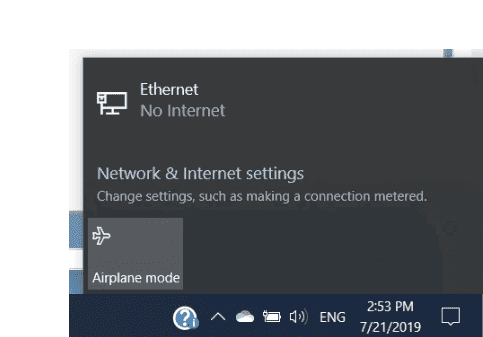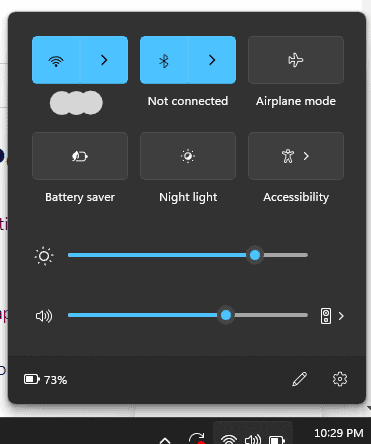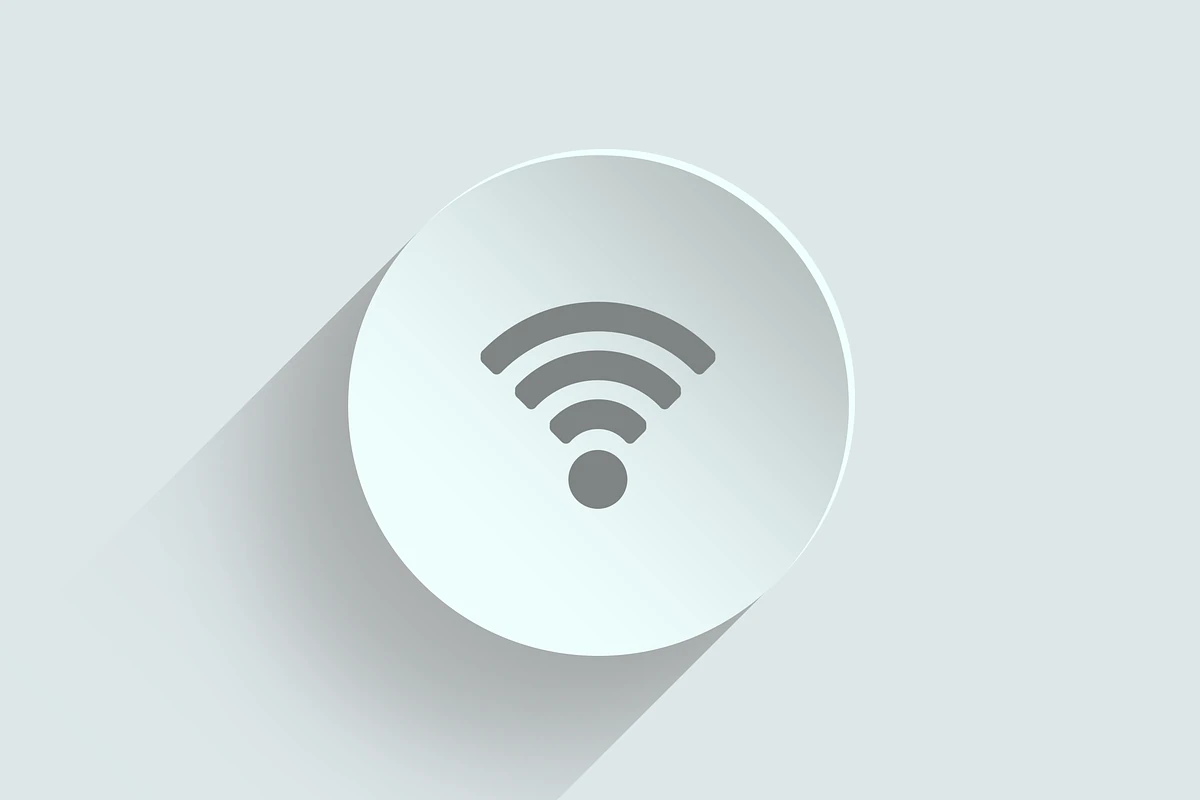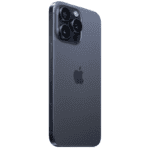Wi-Fi connection problems can be frustrating. Many computer users face this issue at some point. The most common reasons for Wi-Fi connection failures are incorrect network settings, outdated drivers, or hardware issues.
A quick fix often involves restarting your modem and router. This simple step can resolve many connection problems. If that doesn’t work, checking Wi-Fi settings and updating network drivers may help.
Sometimes, the issue lies with the network itself. In public places like hotels, there might be connection limits or login requirements. Understanding these factors can save time and effort in troubleshooting.
| Common Wi-Fi Issues | Quick Fixes |
|---|---|
| Incorrect settings | Check Wi-Fi password |
| Outdated drivers | Update network drivers |
| Hardware problems | Restart modem/router |
| Network limitations | Review connection rules |

Wi-Fi Woes? Troubleshooting Your Connection
It’s frustrating when your computer refuses to connect to Wi-Fi. But before you panic, there are several common culprits and easy fixes you can try:
1. Check the Basics
- Wi-Fi Switch: Make sure your computer’s Wi-Fi adapter is turned on. Look for a physical switch or a function key combination (often involving the “Fn” key).
- Airplane Mode: Ensure Airplane Mode is off, as it disables all wireless connections.
- Router Status: Check if your router is powered on and broadcasting a signal. Restarting your router often helps.
2. Network Selection
- Correct Network: Make sure you’re selecting the correct Wi-Fi network from the list. Networks with similar names can be confusing.
- Password Accuracy: Double-check that you’re entering the correct Wi-Fi password. Passwords are case-sensitive.
3. Troubleshooting Steps
- Run Network Troubleshooter: Windows has a built-in troubleshooter that can automatically diagnose and fix common network problems.
- Update Network Drivers: Outdated or corrupted network drivers can cause connection issues. Update them through Device Manager.
- Forget and Rejoin Network: Sometimes, removing the network from your computer’s saved networks and rejoining it can resolve issues.
4. Advanced Troubleshooting
- Check for Interference: Other devices, physical obstructions, or distance from the router can weaken the Wi-Fi signal.
- Firewall Settings: Ensure your firewall isn’t blocking the Wi-Fi connection. Temporarily disable it to test if that’s the cause.
- IP Address Conflicts: In rare cases, IP address conflicts can prevent connection. Try renewing your IP address or assigning a static IP.
5. Still No Luck?
- Contact Your ISP: If you suspect a problem with your internet service, contact your internet service provider (ISP).
- Seek Technical Support: If you’ve exhausted all troubleshooting steps, consider seeking help from a tech-savvy friend or a professional technician.

| Troubleshooting Step | Description |
|---|---|
| Check the basics | Wi-Fi switch, Airplane Mode, router status |
| Network selection | Correct network, password accuracy |
| Run network troubleshooter | Automatic diagnosis and repair |
| Update network drivers | Ensure drivers are up-to-date |
| Forget and rejoin network | Refresh network connection |
Understanding Wi-Fi Signals
Wi-Fi signals use radio waves to transmit data. Several factors can affect their strength and reliability:
- Distance: The further you are from the router, the weaker the signal.
- Obstacles: Walls, furniture, and other physical objects can block or weaken the signal.
- Interference: Other electronic devices, such as microwaves and cordless phones, can interfere with Wi-Fi signals.
By understanding these factors, you can optimize your Wi-Fi environment for a better connection.
Understanding Wi-Fi Connections
Wi-Fi connections rely on specific frequencies and network standards. These elements impact connection speed, range, and stability.
Wi-Fi Frequencies: 2.4 GHz Vs. 5 GHz
Wi-Fi networks operate on two main frequency bands: 2.4 GHz and 5 GHz. Each has unique traits that affect performance.
2.4 GHz offers wider coverage but slower speeds. It penetrates walls better, making it ideal for larger homes. This band is more crowded, leading to potential interference.
5 GHz provides faster speeds but shorter range. It works best for devices close to the router. This band has less interference, resulting in more stable connections.
Many modern routers are dual-band, supporting both frequencies. Users can choose the best band for their needs.
| Feature | 2.4 GHz | 5 GHz |
|---|---|---|
| Range | Longer | Shorter |
| Speed | Slower | Faster |
| Interference | More | Less |
| Wall Penetration | Better | Worse |

Network Standards and Wi-Fi Channels
Wi-Fi networks use various standards that define speed and compatibility. Common standards include 802.11n, 802.11ac, and the newer Wi-Fi 6 (802.11ax).
Each standard supports different speeds and features. Newer standards offer faster connections and better handling of multiple devices.
Wi-Fi channels are subdivisions of the frequency bands. The 2.4 GHz band has 11 channels in most countries. The 5 GHz band has many more channels.
Choosing the right channel can reduce interference from other networks. Automatic channel selection on routers can help optimize connections.
Understanding these concepts helps users troubleshoot and improve their Wi-Fi performance.
Troubleshooting Network Issues
Wi-Fi connection problems can often be resolved through systematic troubleshooting. Windows provides built-in tools to diagnose and fix network issues. Manual checks can also help identify and resolve connectivity problems.
Utilizing Windows Network Diagnostics
Windows offers a Network Troubleshooter to help identify and fix Wi-Fi problems. To access it, right-click the network icon in the taskbar and select “Troubleshoot problems.” This tool scans for common issues and attempts to resolve them automatically.
The Network Troubleshooter can reset the network adapter, renew IP addresses, and clear DNS cache. It often solves basic connectivity problems without user intervention.
For persistent issues, users can check the Wi-Fi status in Windows Settings. Ensure Wi-Fi is turned on and Airplane mode is off. If the problem persists, users may need to update network drivers through Device Manager.
Manual Network Checks and Configuration
Manual checks can help when automated tools fall short. First, verify the router is functioning properly. Check if other devices can connect to the network.
Users should confirm their computer’s network adapter is enabled in Device Manager. Disabling and re-enabling the adapter can sometimes resolve connection issues.
| Command | Function |
|---|---|
| ipconfig /release | Releases current IP address |
| ipconfig /renew | Obtains new IP address |
| ipconfig /flushdns | Clears DNS cache |
Running these commands in Command Prompt can help refresh network settings. If problems persist, users may need to check router settings or contact their internet service provider for further assistance.
Device-Specific Wi-Fi Problems
Different devices can face unique Wi-Fi connection challenges. Laptops and portable devices often encounter specific issues. Network components may also need proper configuration to ensure smooth connectivity.
Issues with Laptops and Portable Devices
Laptops and other portable devices frequently struggle with Wi-Fi connections. One common problem is outdated or faulty Wi-Fi adapters. To address this, users should regularly update their device drivers.
If updates don’t help, uninstalling and reinstalling the Wi-Fi adapter driver can often resolve issues. This process involves:
- Opening Device Manager
- Expanding Network Adapters
- Right-clicking the Wi-Fi adapter
- Selecting “Uninstall device”
- Restarting the computer
Power management settings can also impact Wi-Fi performance. Adjusting these settings in the adapter properties may improve connectivity.
Configuring Network Components
Proper configuration of network components is crucial for stable Wi-Fi connections. The router is a key component that often needs attention. Users should ensure their router firmware is up-to-date and configured correctly.
Wi-Fi channel congestion can lead to poor performance. Changing the router’s channel can help:
| Channel | Frequency | Typical Use |
|---|---|---|
| 1, 6, 11 | 2.4 GHz | Less interference |
| 36-165 | 5 GHz | Faster but shorter range |
Network security settings are another important factor. Using WPA3 encryption provides the best security but may not be compatible with older devices. In such cases, WPA2 is a secure alternative.
DHCP issues can prevent devices from obtaining IP addresses. Resetting the DHCP server on the router or using a static IP address can resolve these problems.
Ensuring Continuous Access to Wi-Fi
Maintaining a stable Wi-Fi connection is crucial for uninterrupted internet access. Several steps can help ensure continuous connectivity.
Regularly update network adapter drivers. Outdated drivers often cause connection issues. Check for updates through the device manager or manufacturer’s website.
Position the router optimally. Place it centrally and away from obstructions. This improves signal strength throughout the home or office.
Use a Wi-Fi extender for larger spaces. These devices amplify the signal to reach distant areas.
Set up automatic reconnection. Configure Windows to reconnect automatically to preferred networks.
Consider upgrading router hardware. Newer models offer improved range and stability.
Here’s a quick comparison of Wi-Fi standards:
| Standard | Max Speed | Range |
|---|---|---|
| 802.11n | 600 Mbps | 230 ft |
| 802.11ac | 3.46 Gbps | 150 ft |
| 802.11ax | 9.6 Gbps | 260 ft |
Check with the internet service provider (ISP) for service issues. Sometimes, connection problems stem from the ISP’s end.
Minimize interference from other devices. Keep routers away from microwaves, cordless phones, and other electronic equipment.
Use a wired connection when possible. Ethernet cables provide more stable connections for stationary devices.
Frequently Asked Questions
Wi-Fi connection issues can be frustrating. These common questions address key troubleshooting steps and solutions for various Wi-Fi connectivity problems on laptops and computers.
What steps can I take to troubleshoot my laptop’s inability to connect to Wi-Fi?
First, ensure Wi-Fi is turned on. Check the physical switch or function key on your laptop. Restart your router and computer.
Run the Windows network troubleshooter by right-clicking the network icon in the taskbar. This tool can often identify and fix common issues automatically.
How do I resolve a Wi-Fi connection issue on my laptop running Windows 10?
Update your Wi-Fi drivers. Open Device Manager, expand “Network adapters,” and right-click on your wireless adapter. Select “Update driver” and follow the prompts.
Check for Windows updates. These often include fixes for network-related issues. Go to Settings > Update & Security > Windows Update.
Why is my laptop not connecting to Wi-Fi while my phone has no connection issues?
This could be due to outdated or corrupted Wi-Fi drivers on your laptop. Phone and laptop Wi-Fi hardware differ, so issues may not affect both devices.
Try forgetting the network on your laptop and reconnecting. Enter the password again to rule out any authentication issues.
What are common reasons a computer fails to connect to Wi-Fi networks?
Incorrect network password is a frequent cause. Double-check you’re entering the correct password. Router issues can also prevent connections.
Interference from other devices or physical obstacles may weaken the signal. Move closer to the router or remove potential sources of interference.
Why can’t my computer detect any Wi-Fi networks, and how can I fix this?
A faulty Wi-Fi adapter could prevent network detection. Check Device Manager for any warning symbols next to your wireless adapter.
Uninstall and reinstall the Wi-Fi adapter drivers. This can resolve software-related issues preventing network detection.
How can I troubleshoot Wi-Fi connectivity issues in Windows 11?
Use the built-in network troubleshooter. Click the Wi-Fi icon in the taskbar, select “Network & internet settings,” then “Network troubleshooter.”
Check if Windows 11 is up to date. Go to Settings > Windows Update and install any available updates.
| Common Wi-Fi Issues | Quick Fixes |
|---|---|
| No networks visible | Restart Wi-Fi adapter |
| Can’t connect | Check password |
| Slow connection | Move closer to router |
| Intermittent drops | Update Wi-Fi drivers |






